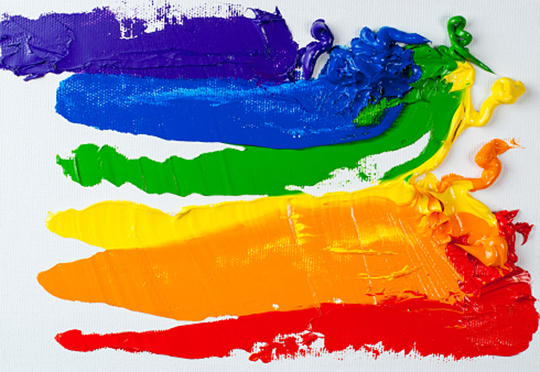At the end of March 2017, Andy Dunlap talked with primary healthcare providers about patients who identify as lesbian, gay, bisexual or transgender (LGBT). Along with Rachel Levine, physician general with the Department of Health in Harrisburg, he presented “Working with LGBT Clients” at Henry Hood Center for Health Research, part of Geisinger Health System, in Danville, Pennsylvania.
Geisinger, with 12 health campuses and two research centers, is one of the nation’s largest health service organizations. It serves residents in 45 counties in Pennsylvania and in southern New Jersey. It employs 30,000, including 1,600 physicians.
Dunlap, Elizabethtown College associate professor of social work, spoke with almost 100 Geisinger nurses, doctors and counselors about best practices for LGBT clients and the impact of recent changes in the coming out process.
It’s important for healthcare professionals to learn about this.”
 The conference centered on cultural competency issues pertinent to LGBT clients, historical diversity in the coming out process, strategies for assessing LGBT clients and for providing psychological support, differences between gender identity and sexual orientation and health disparities and guidelines for treatment.
The conference centered on cultural competency issues pertinent to LGBT clients, historical diversity in the coming out process, strategies for assessing LGBT clients and for providing psychological support, differences between gender identity and sexual orientation and health disparities and guidelines for treatment.
“I started talking about basics,” Dunlap said, noting he couldn’t assume knowledge level for all conference attendees. “If you are a counselor and you’re sitting down with a woman who is 50, what was her coming out process like?”
The old message about coming out, Dunlap said, was “dismantle your life and move to the city.” Today, thanks to historic events—the Stonewall Riots of 1969, the first U.S. gay marriage in 2004 … and especially, support from widespread use of the internet—people are reaching coming out milestones at a significantly younger age.
There is a definite shift to come out before age 18, compared to previous generations who, on average, came out at 22 to 25, Dunlap said. “If they are 60 or 70, they came out even later—in their 30s.”
But, even with societal support, there are still struggles.
An internal process takes place first, Dunlap said. This includes detoxifying external messages that what they’re feeling is wrong. Without family support, younger LGBT individuals are more likely to be homeless and depressed.
“It’s important for healthcare professionals to learn about this,” the professor said. LGBT are also more likely to experience physical issues, as well. Lesbians, for instance, are more likely to have breast cancer, Dunlap said. “They are less likely to go for preventative care, because they don’t trust their physicians.”
There also are sexual stereotypes to consider, Dunlap said. If woman’s physician asks if she is sexually active and then refers her for birth control, that is assumptive.
Dunlap said he began researching the LGBT community when, as a counselor at Bucknell and Susquehanna universities, he noticed his caseload of gay and lesbian students was disappearing. “The coming out process was beginning at a younger age—12 years or so.” Previously, he had worked with students who were soul searching, exploring their sexual orientation. “There was a lot to process.”
In response to this noticeable shift, Dunlap sent out surveys to individuals in the LGBT community. Seven years later, he said, he’s still sifting through the telling data culled from 1,300 responses.


